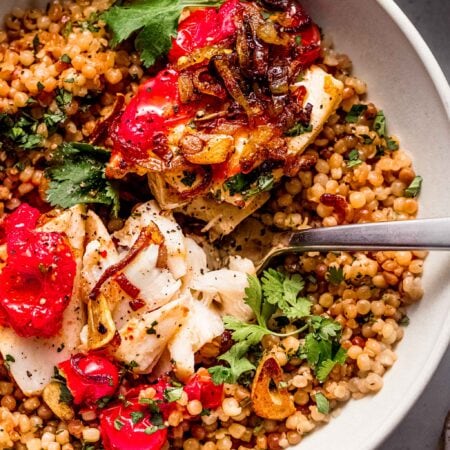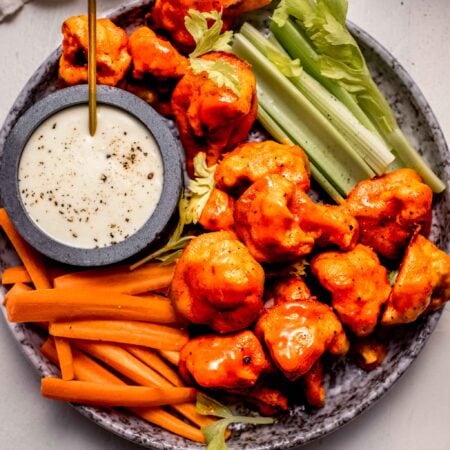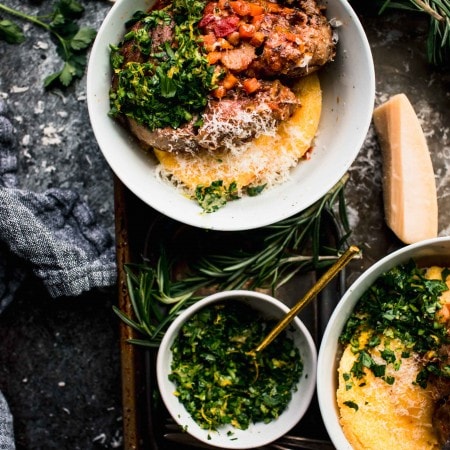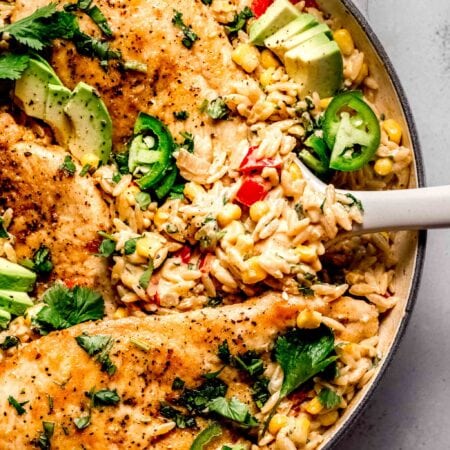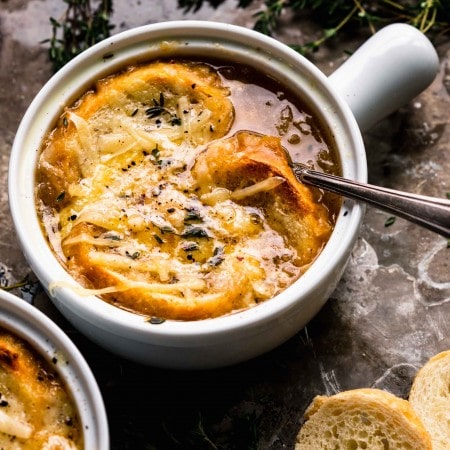Steelhead and salmon may look and act similar but they’re not the same! Learn about the difference between steelhead and salmon in this thorough guide. From their flavors to cooking tips to serving and pairing ideas, it touches on everything you’ll need to know about these two delicious types of fish.

Want to Save This Recipe?
Enter your email & I'll send it to your inbox. Plus, get great new recipes from me every week!
By submitting this form, you consent to receive emails from Platings + Pairings.
Learn more about salmon and trout in my guide, Trout vs. Salmon: The Key Differences!
Salmon and steelhead are two fish that look and act a lot alike but they’re far from being the same! Learn about the key differences between steelhead trout and salmon in this comprehensive guide. From their different tastes to appearances to how to prepare them, this guide has you completely covered.
Is steelhead a salmon or a trout?
It’s up for debate whether steelhead is a trout or salmon. Steelhead act very similarly to Pacific salmon since they migrate from freshwater to the ocean and eat the same diet. Others believe they’re definitely trout because of their repeated spawning (which salmon do not do).
Long story short, steelhead is essentially a trout that acts just like a salmon.
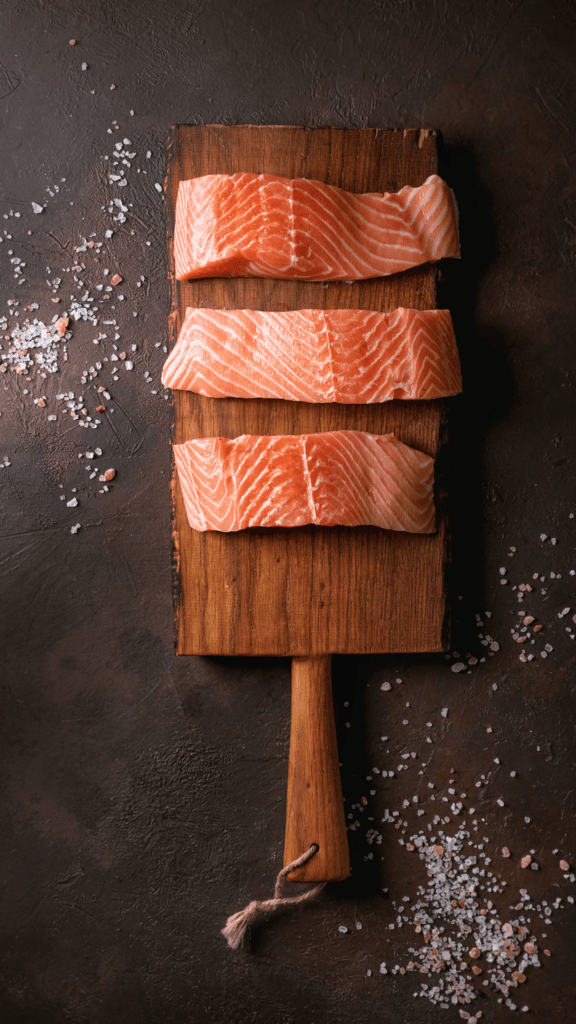
All about steelhead trout
Steelhead trout live both in freshwater rivers or streams and in the Pacific Ocean. The ones who stay in freshwater are known as rainbow trout. The ones who migrate to the ocean become much larger since they have so much more to eat. But wherever they end up, steelheads always return to the place they were born to spawn (just like salmon).
Learn more about this anadromous fish and its differences from salmon below:
Appearance
- Trout have round heads and bodies and typically weigh between 8 and 11 pounds.
- Their flesh is pinkish-red, similar to salmon, so it’s common to mix up the two when shopping. Keep in mind that steelhead trout flesh is a bit lighter in color compared to the bold salmon red.
- The fish itself has silver scales, although the color isn’t as vibrant as salmon.
Taste
- If you’ve ever found salmon to be too rich or “fishy” for you, then you’ll love steelhead trout!
- Generally, trout is a mild-tasting fish, but steelhead boasts sweeter and buttery notes.
- The texture of the flesh is light and delicate.
How to shop for steelhead
I always recommend going to your local fishmonger when shopping for fresh fish. They’ll provide you with the best options and give you recommendations on how to prepare what you buy.
- You can find whole steelhead, filets, steaks, or pre-dressed fish from a fishmonger or the seafood section of your grocery store.
- You can also buy frozen steelhead if you plan on cooking it later on.
- Fresh steelhead is plentiful throughout winter and spring in the Pacific Northwest but the frozen fish can typically be found year-round in North America.
- Steelhead is almost always less expensive than salmon.
Tips for cooking with steelhead
Whether you’re making a meal for someone who isn’t a huge fan of fish or you want something lighter than salmon, steelhead is the right choice. Its light and delicate flavors will please everyone and it’s easy to cook in a variety of ways. Check out these tips before getting started:
- You can grill, smoke, pickle, cure, pan-fry, bake, poach, or sauté steelhead.
- Let the frozen fish thaw in the fridge for up to 2 days if you aren’t cooking it right away.
- Its delicate flesh is best complemented by simple seasonings, like butter, lemon, salt, black pepper, and fresh herbs.
- For a fancier presentation, serve the cooked fish with a drizzle of my Lemon Butter Dill Sauce or any of these 30+ Classic Sauces for Fish.
Wine pairings
- Choose a rich and flavorful white wine for this meaty fish, like an oak-aged Chardonnay.
- Even a light Pinot Noir or Rosé will pair well with the steelhead.
What goes well with steelhead?
Steelhead is a great all-purpose fish. Either layer the cooked fish in a tortilla for fish tacos or make it an impressive main dish! Its subtly sweet flavors would be beautifully complemented by any of these simple side dishes:

All about salmon
Salmon is a popular fish for a reason! It’s delicious, plentiful, and good for you. There are also many different types of salmon to choose from, like sockeye, Atlantic, chinook, coho, pink, and more.
Just like some steelhead trout, salmon are born in freshwater streams, migrate to the ocean, and then return to freshwater to spawn and mate. There are, however, many differences that set salmon apart from steelhead:
Appearance
- Salmon are silver, just like steelhead, but have spots all over their fins and backs. Their color can also change to brown, red, or pink during the breeding season.
- Their bodies are long and slender, usually weighing between 4 and 8 pounds.
- The flesh has a bold pink-red color that’s a touch more vibrant than steelhead flesh.
Taste
- Salmon has a rich, oily, fatty, and buttery flavor. It’s often described as being more “fishy” than trout.
- When cooked, salmon becomes tender, flaky, and meaty. A small amount can be quite filling!
How to shop for salmon
Salmon is common throughout North America but more so in the Pacific Northwest. Just like trout, I recommend going to your local fishmonger to find the best quality salmon.
- You’ll likely find fresh or frozen Pacific and Atlantic salmon in the seafood section at your local grocery store.
- Look for filets or whole fish that appear moist, don’t smell fishy, and are free from blemishes or brown spots.
- If the skin is attached, make sure it isn’t browning at all or curling up around the edges.
Tips for cooking with salmon
I love cooking salmon because there are no limits to the ways you can prepare it! Keep these tips in mind before you make this versatile protein:
- You can cook salmon either with the skin on or removed. The skin adds a little more flavor and gets nice and crispy when cooked.
- You can bake, sous vide, smoke, air fry, pan-fry, grill, and pressure cook salmon filets, whole fish, or bite-sized pieces.
- This satisfying fish is great when it’s simply seasoned with butter, lemon, or dill, or when it’s dressed in more robust seasonings and sauces. My Salmon Dry Rub and these 15 Sauces for Salmon always add a nice punch of flavor!
Wine pairings
- There’s nothing like a crisp and light Chardonnay or Sauvignon Blanc with salmon.
- A light Pinot Noir or a young Beaujolais are not obvious choices for fish but complement salmon very well.
- Check out my list of The Best Wines to Pair With Salmon for more options.
What goes well with salmon?
Pair your lightly seasoned salmon with these simple sides:
- Sous Vide Asparagus
- Roasted Brussels Sprouts
- Tomato Cucumber Salad
- Lemon Risotto
- Zucchini Pasta Salad
- Or any of these 45+ BEST Sides For Salmon

Did you like this salmon vs steelhead guide?
If you loved this guide on the differences between steelhead and salmon, I would appreciate it so much if you would leave a ⭐️star review⭐️! Also, be sure to snap a picture of your finished dish and share it with me on Instagram using the hashtag #platingsandpairings and tagging me @platingsandpairings.
For more great Platings & Pairings recipes, be sure to follow me on Pinterest, Facebook, YouTube and Twitter.

Salmon vs. Steelhead: The Differences
Ingredients
- 4 salmon filets (about 6 oz. each)
- 2 Tablespoons extra virgin olive oil
- Kosher salt + pepper (to taste)
Instructions
- Preheat your oven to 425 degrees.
- Drizzle salmon filets with olive oil and sprinkle with salt and pepper.
- Arrange salmon on a baking sheet, skin side down, and bake for 12-15 minutes, until salmon is cooked through and flakes easily with a fork.



